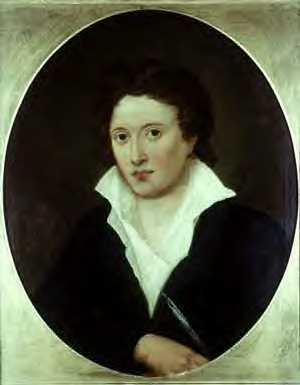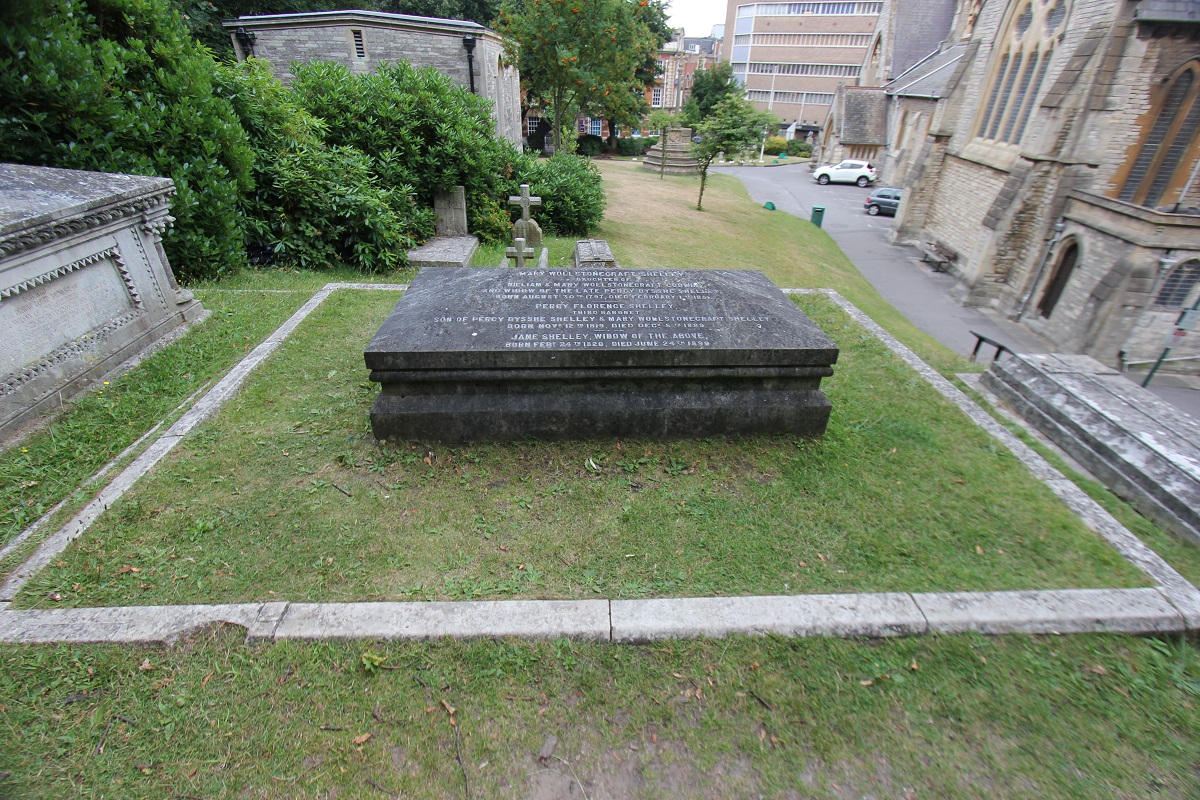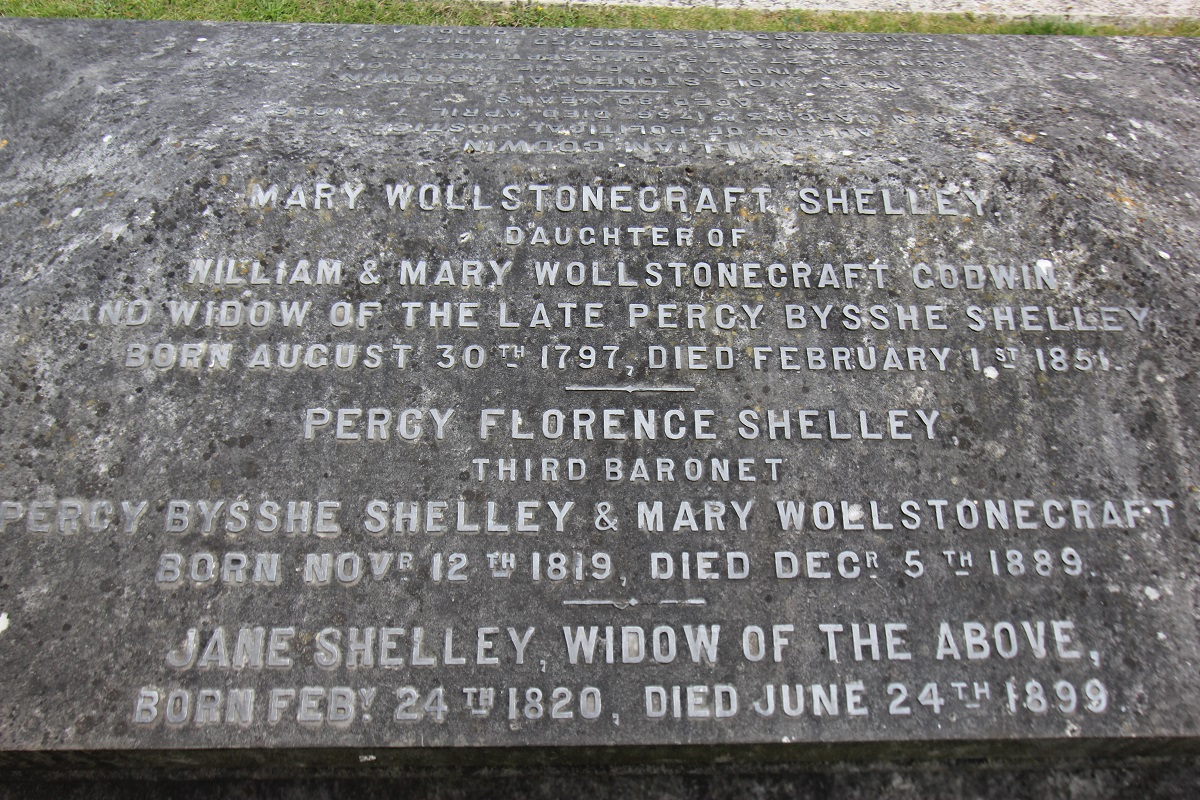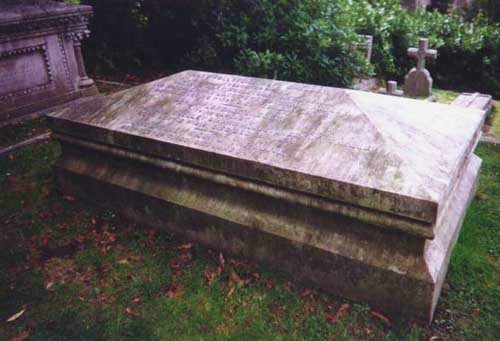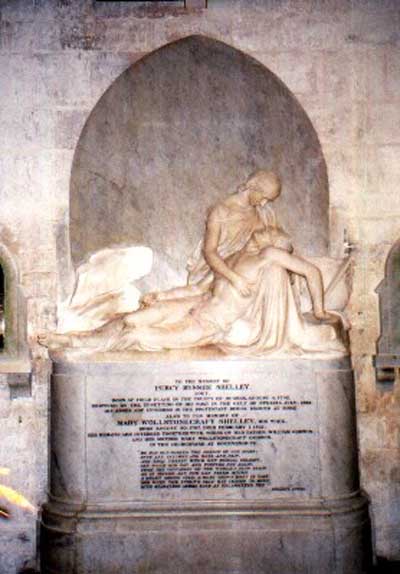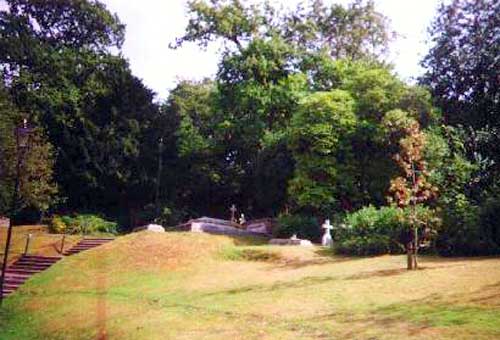Poet. Born at Field Place, Sussex, England, one of six children to Elizabeth and Timothy Shelley. He attended both Eton and Oxford, during which time he had published a Gothic novel, "Zastrozz"' (1810), and two volumes of juvenile verse. After his first year at university, he published the pamphlet, "The Necessity of Atheism" (1811) for which the Oxford authorities expelled him. In August 1811, he eloped with Harriet Westbrook, a woman of no family or fortune, angering his wealthy father and grandfather. For the next two years, he published political pamphlets, before the appearance of his first long poetic work, "Queen Mab: A Philosophical Poem" in 1813. The following year, he became enamored of Mary Godwin, and he abandoned the pregnant Harriet to elope with Mary to Europe. They were largely ostracized upon their return, especially by their families. The death of his grandfather the following year, however, ensured an annual allowance. In 1816, "Alastor" or, "The Spirit of Solitude: and Other Poems," a volume of his Romantic poetry appeared; a result of the famous summer at Lake Geneva, which also inspired Mary's novel, "Frankenstein." That December, Harriet committed suicide, and within the month, he and Mary were officially married, though he lost custody of his two children by Harriett. In 1817, he produced "Laon and Cythna," a narrative poem, which was suppressed for its content; it was later edited and reissued as "The Revolt of Islam" (1818). In 1818, he and his wife left England, and traveled to Italy. It was there his most famed works were produced: "Ozymandias" (1818), "The Masque of Anarchy" (1819), "Ode To The West Wind" (1820),"'Prometheus Unbound" (1820), and "Adonais" (1821). In 1822, the Shelleys rented a villa on the Bay of San Terenzo, near Lerici, where he enjoyed sailing his boat, the Don Juan. He then began writing his epic, "The Triumph of Life." A month before his thirtieth birthday, while attempting to sail from Leghorn to La Spezia, a squall capsized his boat, and both he and his friend drowned, leaving his last work unfinished. His body washed ashore ten days later on the beach near Viareggio where it was cremated. His ashes were buried in the Protestant Cemetery in Rome. His heart, possibly calcified by tuberculosis, resisted cremation. It was eventually buried at St Peter's Church, Bournemouth with Mary. He also has a cenotaph at St Mary the Virgin Churchyard, Horsham.
Poet. Born at Field Place, Sussex, England, one of six children to Elizabeth and Timothy Shelley. He attended both Eton and Oxford, during which time he had published a Gothic novel, "Zastrozz"' (1810), and two volumes of juvenile verse. After his first year at university, he published the pamphlet, "The Necessity of Atheism" (1811) for which the Oxford authorities expelled him. In August 1811, he eloped with Harriet Westbrook, a woman of no family or fortune, angering his wealthy father and grandfather. For the next two years, he published political pamphlets, before the appearance of his first long poetic work, "Queen Mab: A Philosophical Poem" in 1813. The following year, he became enamored of Mary Godwin, and he abandoned the pregnant Harriet to elope with Mary to Europe. They were largely ostracized upon their return, especially by their families. The death of his grandfather the following year, however, ensured an annual allowance. In 1816, "Alastor" or, "The Spirit of Solitude: and Other Poems," a volume of his Romantic poetry appeared; a result of the famous summer at Lake Geneva, which also inspired Mary's novel, "Frankenstein." That December, Harriet committed suicide, and within the month, he and Mary were officially married, though he lost custody of his two children by Harriett. In 1817, he produced "Laon and Cythna," a narrative poem, which was suppressed for its content; it was later edited and reissued as "The Revolt of Islam" (1818). In 1818, he and his wife left England, and traveled to Italy. It was there his most famed works were produced: "Ozymandias" (1818), "The Masque of Anarchy" (1819), "Ode To The West Wind" (1820),"'Prometheus Unbound" (1820), and "Adonais" (1821). In 1822, the Shelleys rented a villa on the Bay of San Terenzo, near Lerici, where he enjoyed sailing his boat, the Don Juan. He then began writing his epic, "The Triumph of Life." A month before his thirtieth birthday, while attempting to sail from Leghorn to La Spezia, a squall capsized his boat, and both he and his friend drowned, leaving his last work unfinished. His body washed ashore ten days later on the beach near Viareggio where it was cremated. His ashes were buried in the Protestant Cemetery in Rome. His heart, possibly calcified by tuberculosis, resisted cremation. It was eventually buried at St Peter's Church, Bournemouth with Mary. He also has a cenotaph at St Mary the Virgin Churchyard, Horsham.
Bio by: Iola
Advertisement
See more Shelley memorials in:
Explore more
Sponsored by Ancestry
Advertisement


